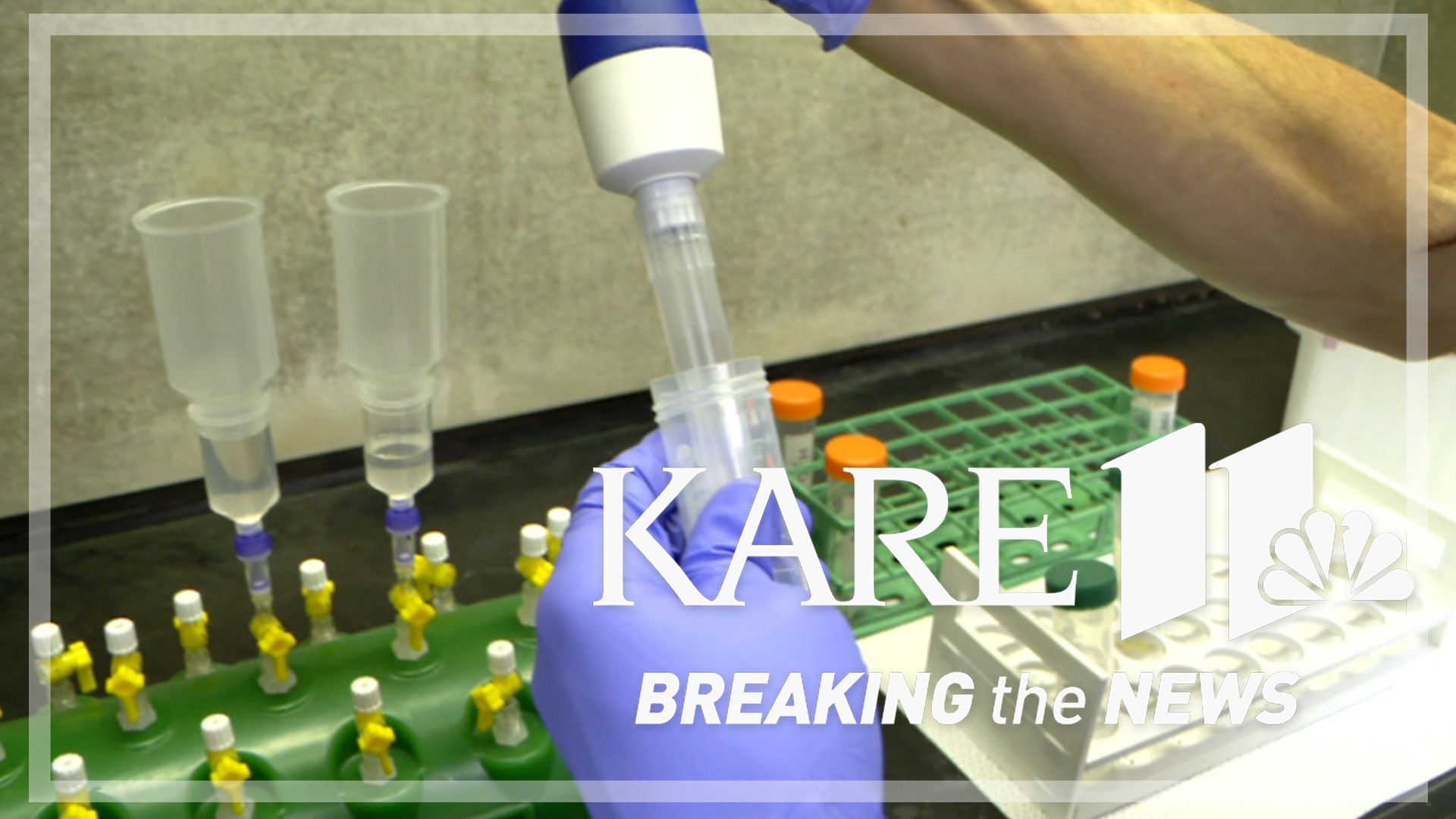MINNEAPOLIS — Throughout the pandemic, wastewater testing has emerged as one of the most reliable ways to track – and predict – how COVID is circulating in the community.
Now, the University of Minnesota Medical School is working on a way to tap its existing network of 44 wastewater plants and to track the other two viruses that are currently tying up our hospitals and emergency rooms.
"We're working on a platform that will simultaneously measure flu, RSV and SARS-COV2," said Dr. Timothy Schacker, vice dean for research at the University of Minnesota Medical School. "It's the same sample, it's just that the target is different. The flu is trickier [than COVID and RSV] so what we're trying to do is optimize the assay, so that we can, with greater sensitivity, detect the flu virus."
Dr. Schacker says that is coming soon, but at a time when the flu and RSV are already widespread, and causing widespread issues in our health care system, he says there is a bigger question to consider.
"What do you do with that information?" Dr. Schacker said. "Right now, we know it's already here, but at the beginning of the respiratory virus season, it's probably pretty useful to be looking to see where it comes from and how it emerges. We can work collaboratively with the Minnesota Department of Health and they can alert pediatricians, etc., in the area to be on the watch for this."
And that's not the only warning the tiny vials of wastewater might ultimately provide. For the last year, Dr. Schacker says the U o fM has sent samples from two wastewater sites to the National Institutes of Health for an even bigger study.
"We are building out a platform now where we are going to sequence all of the RNA fragments that are in wastewater and then look for what's there, what pathogens are there," he said. "What I'm really interested in is what's out there that we don't know. We just have to go looking."
Dr. Schacker says grant money from the CDC and MDH is making that research possible, along with NIH equipment that will soon allow for more sequencing within Minnesota.
"I'm hoping, in three or four months, we'll have started to see how feasible this is and what kind of results we're going to be getting," he said.
If it proves effective, he says it will be thanks to a nation-leading network of sites that all see the value, and promise, in our waste.
"They're just doing an amazing job sending us these samples twice a week," Dr. Schacker said. "These wastewater treatment plants are really the backbone of what we're working to accomplish here."
Sequencing all of the RNA fragments in wastewater presents enormous challenges for both labs and data processing. Dr. Schacker says the limited samples they tested and sequenced in 2021 identified 6,000 unique pathogens. He says many of those pathogens came from animals, or otherwise pose no threat to humans, but there were findings that surprised the research team.
He says it's important to make sense of those surprises before another virus surprises us.
Watch more Breaking The News:
Watch all of the latest stories from Breaking The News in our YouTube playlist:

